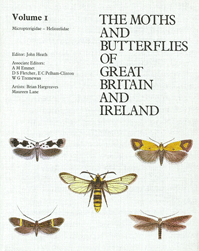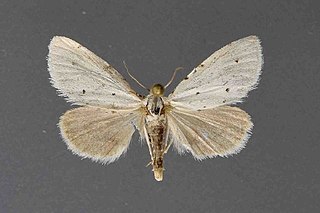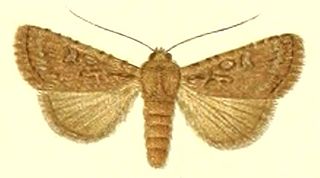
The Noctuidae, commonly known as owlet moths, cutworms or armyworms, are a family of moths. They are considered the most controversial family in the superfamily Noctuoidea because many of the clades are constantly changing, along with the other families of the Noctuoidea. It was considered the largest family in Lepidoptera for a long time, but after regrouping Lymantriinae, Catocalinae and Calpinae within the family Erebidae, the latter holds this title now. Currently, Noctuidae is the second largest family in Noctuoidea, with about 1,089 genera and 11,772 species. This classification is still contingent, as more changes continue to appear between Noctuidae and Erebidae.

Noctuoidea is the superfamily of noctuid or "owlet" moths, and has more than 70,000 described species, the largest number of any Lepidopteran superfamily. Its classification has not yet reached a satisfactory or stable state. Since the end of the 20th century, increasing availability of molecular phylogenetic data for this hugely successful radiation has led to several competing proposals for a taxonomic arrangement that correctly represents the relationships between the major lineages.

The Moths and Butterflies of Great Britain and Ireland is a multi-volume reference work on the Lepidoptera of the British Isles.

The Xylenini are a mid-sized tribe of moths in the Hadeninae subfamily. There is some dispute about this tribe. Some resources have these genera listed under subfamily Cuculliinae instead, or upranked them to a distinct subfamily Xyleninae.

Mniotype satura, the beautiful arches, is a moth of the family Noctuidae. It is found in the Palearctic realm.

Klugeana is a genus of moths of the family Noctuidae.

Grotellaforma is a monotypic moth genus of the family Noctuidae erected by William Barnes and Foster Hendrickson Benjamin in 1922. Its only species, Grotellaforma lactea, was first described by Stretch in 1885. It is found in North America, including California and Arizona, its type locations.

Grotella dis is a moth in the genus Grotella, of the family Noctuidae. The species was first described by Augustus Radcliffe Grote in 1883. This moth species is found in North America, from the Argus mts. in Kansas to North Mexico.

Grotella blanca is a species of moth in the genus Grotella, of the family Noctuidae. This moth is found in North America, including Arizona, its type location. The species was first described by William Barnes in 1904.
Grotella vauriae is a moth in the genus Grotella, of the family Noctuidae. The species was first described by Rowland R. McElvare in 1950. This moth species is found in North America, including Texas, its type location.

Cucullia syrtana is a moth of the family Noctuidae first described by Paul Mabille in 1888. It is widely distributed in the desert and semi desert zone from the western Sahara and Morocco to Egypt, the Arabian Peninsula, Iraq and Iran. It has also been recorded on Malta and in Greece.
Shargacucullia strigicosta is a moth of the family Noctuidae. The species was first described by Boursin in 1940. It is found in Iraq and the Sinai in Egypt. Recently it has also been recorded from Israel and some areas of Turkey, Azerbaijan and Iran.
Calocucullia celsiae is a moth of the family Noctuidae. The species was first described by Gottlieb August Wilhelm Herrich-Schäffer in 1850. It is found from the Balkans to Turkey, northern Iraq, Armenia, Iran, Israel, Jordan and Lebanon.
Calophasia angularis is a moth of the family Noctuidae. The species was first described by Pierre Chrétien in 1911. It is found from the western parts of the Sahara and Morocco throughout all North Africa, Riyadh, Israel, Jordan and Turkmenistan.
Cleonymia warionis is a moth of the family Noctuidae first described by Charles Oberthür in 1876. It is known from localities in Algeria, Morocco, Libya and Israel.
Cleonymia chabordis is a moth of the family Noctuidae. The species was first described by Charles Oberthür in 1876. It is found in North Africa, the Near East and Middle East, the Arabian Peninsula, Iran, Jordan and Israel.
Teinoptera culminifera is a moth of the family Noctuidae. The species was first described by H. Calberla in 1891. It is found in North Africa, the central Arabian deserts, the Sinai in Egypt, Jordan and Israel.
Omphalophana anatolica is a moth of the family Noctuidae first described by Julius Lederer in 1857. It is found in south-eastern Europe, the Near East and Middle East.
Metopoceras delicata is a moth of the family Noctuidae first described by Otto Staudinger in 1898. It is found in the Arabian Peninsula, Iraq, Turkey, Israel, Jordan and Syria.

Sympistis exacta is a moth of the family Noctuidae first described by Hugo Theodor Christoph in 1887. It is found from the Near East to central Asia and Mongolia.












